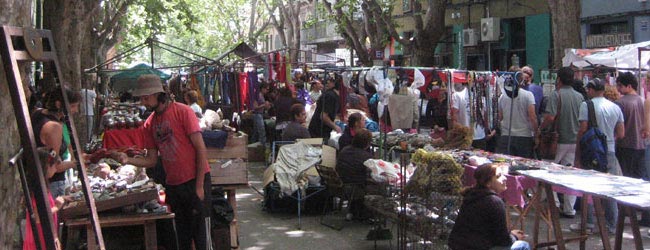Join the UruguayNow mailing list:
UruguayNow in the press
UruguayNow's mix of travel and tourist information on Uruguay, hotel reviews for Montevideo and Punta del Este (coming soon for Colonia), restaurant reviews and tips on excursions, sightseeing and lifestyle in Uruguay has been featured in El Pais, La Republica, MercoPress and on Uruguay's Channel 5 TV and other news media in the country. Internationally, we have had kind mentions in the New York Times and the Daily Telegraph.
Best of the Web
Not yet made it to Uruguay? When you're done with UruguayNow, our choice of the top 6 internet resources for the country is just a mouse click away. In no particular order, they are:
Southern Cone Travel: http://southernconeguidebooks.blogspot.com/
Mercopress: http://en.mercopress.com/
Ola Uruguay: www.olauruguay.com
Retired in Uruguay: http://wallyinuruguay.blogspot.com/
Uruguay Natural: www.uruguaynatural.com
Global Property Guide: http://www.globalpropertyguide.com/Latin-America/Uruguay
For reviews of these sites, please click here.
Other recommended sites

Market forces
Don't miss Montevideo's wonderful Tristán Narvaja street market
Looking for a panama hat? Or a new pair of laces? Or a gerbil?
Come to the Tristán Narvaja flea market on a Sunday morning and you can buy any of these things – and much more besides. For many Montevideo residents Sunday would not be Sunday without a stroll through "Tristán", often with their mate gourd and thermos flask in hand, to thumb nostalgically through stacks of old LPs, squint at pages of stamps, or just buy the week's fruit and vegetables.
Few market traders have been associated with the market longer than Wilson de Sosa, who has worked a stall at Tristán Narvaja for "almost 51 years".
Mr de Sosa sells mainly sheet music spread across a couple of tables in the blocks given over to booksellers on calle Paysandú, to the right as you walk down calle Tristán Narvaja. And what kind of sheet music, exactly? "All kinds. Whatever I can buy cheap and sell with a big mark-up," says Mr de Sosa with a smile, as he glances at piles of Schubert and Rachmaninoff, tied up neatly with string. Opposite him, one stallholder asks another for some change, offering him a pat on the back and a cigarette as he does so.
Many of the stalls hereabouts sell second-hand books written by figures of the Uruguayan left: Titles by Eduardo Galeano appear regularly, the face of Mario Benedetti smiles up from a number of dust jackets, and there are compilations of speeches and articles by one-time guerilla fighter and new Uruguayan President José (Pepe) Mujica. Sandwiched in between are coffee-table books with pictures of millionaire residences in Punta del Este; others sport pretty whitewashed ranch houses and gauchos on horseback on their covers. One lady has a pile of old Hola magazines. The dominant aroma in the market is woodsmoke.
Celebrating its centenary, the market appears to grow and grow. But apart from expanding, what other changes have there been over the years?
"The thing is," says Mr de Sosa, "Tristán has changed very little. Most of all it's to do with technology. Cassettes started appearing, then CDs and DVDs. And then there's the recession. People bring what they find and show up at the market hoping to make a little money. Before they know it, the market has become a habit and they stay."
Only partly regulated, the market sprawls for five or six blocks along calle Paysandú and neighbouring streets, away from the booksellers. Here there are no stalls, just sheets laid out on the pavement, their corners pinned down with stones. One man is selling a 1970s cream-coloured dial-up phone and a box of old keys of different sizes. Nothing else. Another is rather despondently hawking a box of porn and some aprons and tea towels.
At the fringes, sounds drift in and out. Teams of traditional candombe drummers beat out a ferocious rhythm, collecting coins in a plastic cup as they drift down calle Tristr�n Narvaja, the spine of the market (this is traditional carnival music but they are here in all seasons). A knot of street singers pumps out ballads, holed up in a busy spot next to a van selling hot dogs and hamburgers. "The market has always attracted musicians," says Mr de Sosa. "Youngsters come here to try out. It helps them beat their stage fright."
The section of the market given over to antiques is the part most visited by tourists: silverware from a time when Uruguayans had the resources to import massively; faux-Oriental vases; coins from all over the globe. And what is the human version of a traffic jam? Well, there is one of those when a family with a stroller tries to navigate through the roots of a sycamore tree that have broken free of the paving. The wheels get stuck next to a stall selling T-shirts with MVD across the front. Others say: "La feria de Tristán Narvaja". It is late spring and the T-shirt seller is doing a brisk trade.
Not a huge change, maybe, but a sign of the times nonetheless.
Factfile: Tristán Narvaja street market operates every Sunday from early in the morning to about 2 pm. Calle Tristán Narvaja is perpendicular to Avenida 18 de Julio and very close to the main University building. For recommended bookshops in this area, see the Shopping in Montevideo chapter.
